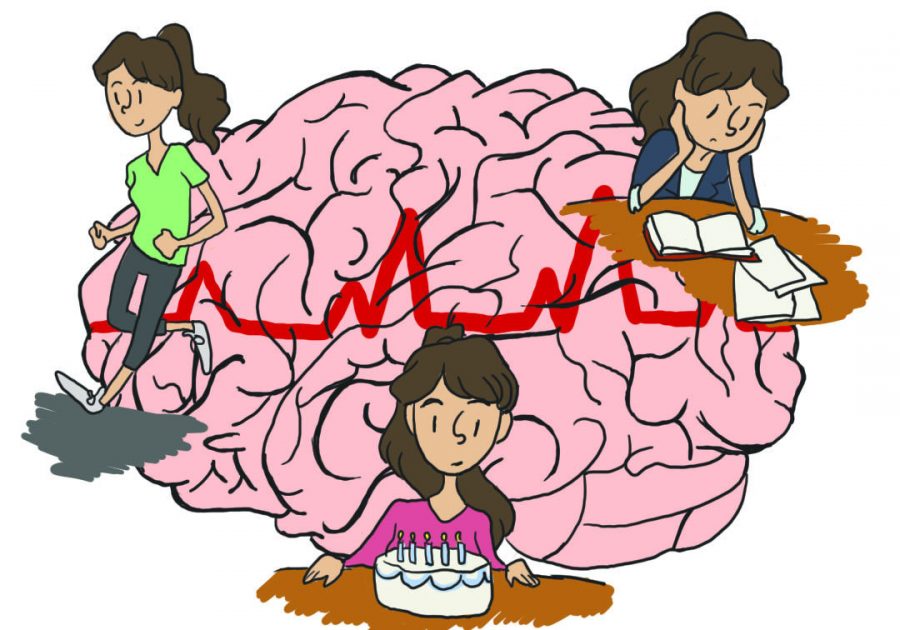Infrared light highlights brain health
Infrared light highlights brain health
September 2, 2014
A new technique that employs infrared light to measure pulse pressure and arterial stiffness in the brain may also help illuminate connections between long-term brain health and the effects of stress, aging and exercise.
“The way it works is we’re measuring different wavelengths of light through tissue,” said Monica Fabiani, professor of psychology at the University of Illinois at Urbana-Champaign and a lead researcher involved in the development of this new technique.
She said one wavelength of light measured oxygenated blood while the other measured deoxygenated blood in the arteries of the brain. The team was able to account for how much blood was in certain parts of the brain by measuring the total amount of light that shone through and whether it was oxygenated or deoxygenated by its color—red and blue, respectively.
Researchers directed the infrared light through the eye to trigger a response in the brain. They were then able to measure the hemodynamic signal—how the blood flowed through the arteries in response to the trigger—to determine the pressure of the pulse and the stiffness of the arteries.
“Generally speaking, stiffness is not a good thing and elasticity is good,” said Ed Maclin, a research assistant professor at the Beckman Institute at the University of Illinois at Urbana-Champaign.
He said the elasticity in a blood vessel hammers out and smoothes the pulse pumped through the arteries by the heart, so by the time it reaches the brain, it is a much more continuous flow of blood.
As people age, certain factors can influence whether or not the arteries in the brain harden, Maclin said. He said researchers have used ultrasounds in the past to measure the speed and direction of blood flow, but that approach is limited to only measuring one part of the brain at a time.
“We think that we may be able to measure things like dynamic changes related to someone’s cognitive process,” Maclin said. “[That is] what part of the brain someone is using at a specific moment to deal with a specific situation.”
The ability of this new, noninvasive procedure to make measurements all over the head simultaneously could allow for researchers to study how blood vessels are distributed throughout different regions of the brain, which has not been done before, Maclin said.
While the new research did not include any specific measures of stress, Fabiani said the likelihood of developing neurological issues later in life might be higher for people with stiffer arteries in the brain.
Kereshmeh Taravosh-Lahn, a Ph. D. and post-doctoral fellow at the University of California, Berkeley, said chronic stress can change the physical landscape of the brain as well as effect its neurochemical makeup. Any type of stressor, whether running away from a lion or speaking in front of a crowd, can activate something called the hypothalamic pituitary adrenal axis, she said in an email.
Chemically, the only things that the body differentiates among mental, emotional, physical or environmental stressors are the degree, duration and type of stress, whether chronic or acute, Taravosh-Lahn said. Long-term chronic stress can be damaging whereas acute stress can be beneficial. Fabiani explained that in a paper published April 7 in the journal Frontiers In Aging Neuroscience, her team was able to establish a correlation between decreased blood flow to the brain and diminished tissue. Aging and lack of fitness tend to play against one another in the brain. Aging works to increase stiffness of the arteries, and maintaining heart and lung fitness can help work against that. According to Fabiani, there is research that suggests exercise helps to decrease stress, which could make maintaining fitness even more beneficial as people age.
“There are a lot of changes that occur in an aging brain,” Fabiani said. Fabiani said that long-term stress seems to create all sorts of problems throughout the body, including an increased likelihood of developing heart and brain disease as blood pressure and other markers of wear and tear increase.
“People should exercise,” Fabiani said. “It seems like staying physically fit makes a huge difference in how the brain ages.”








